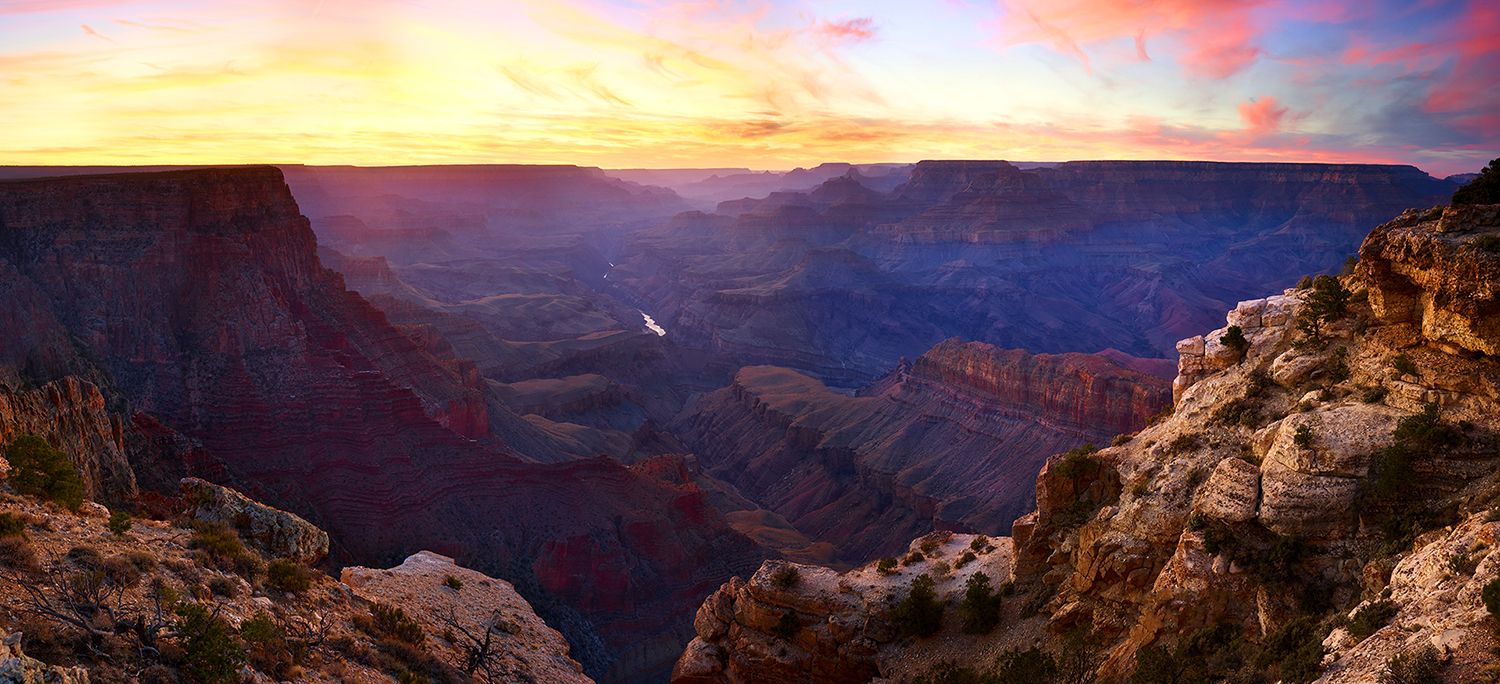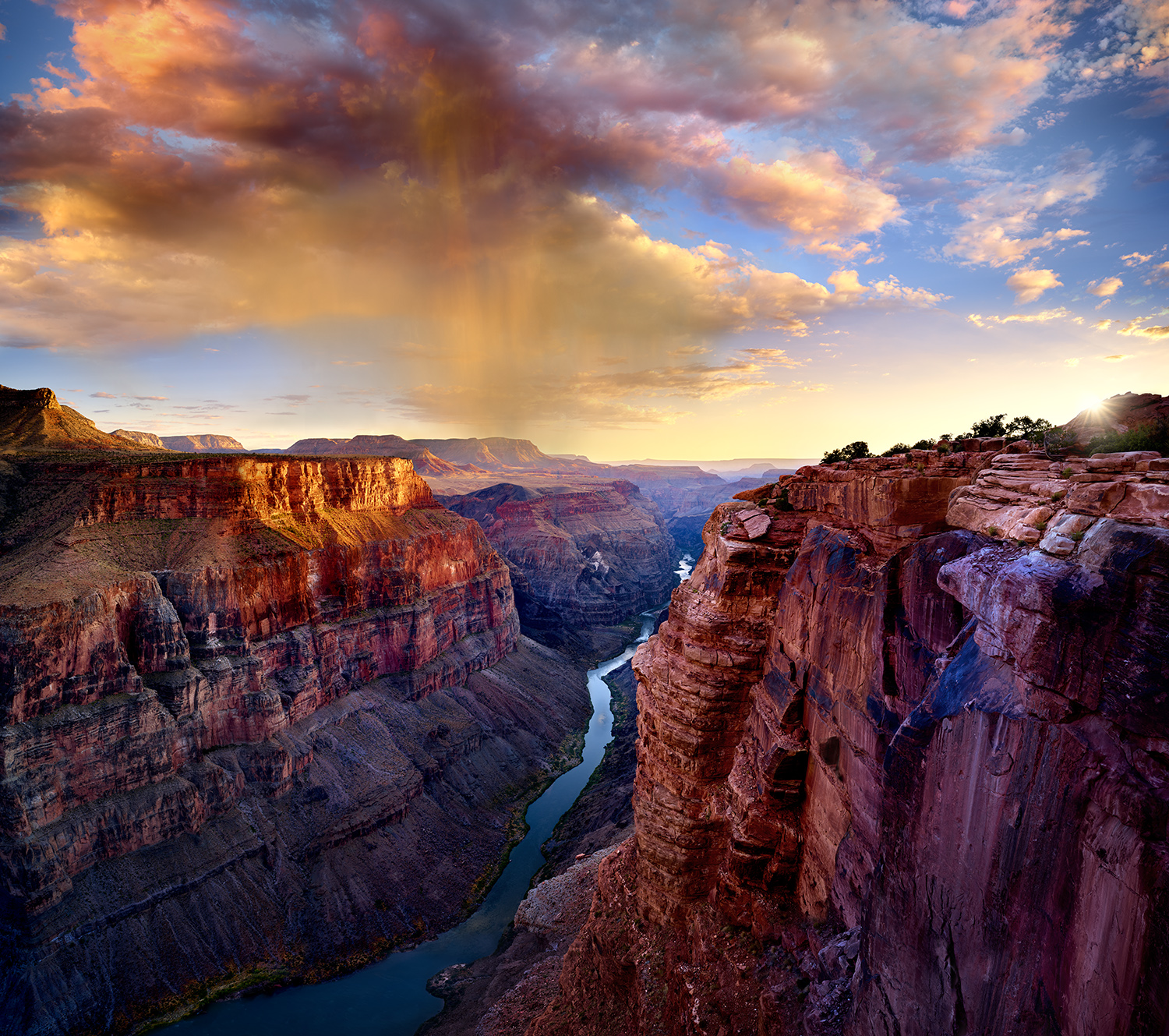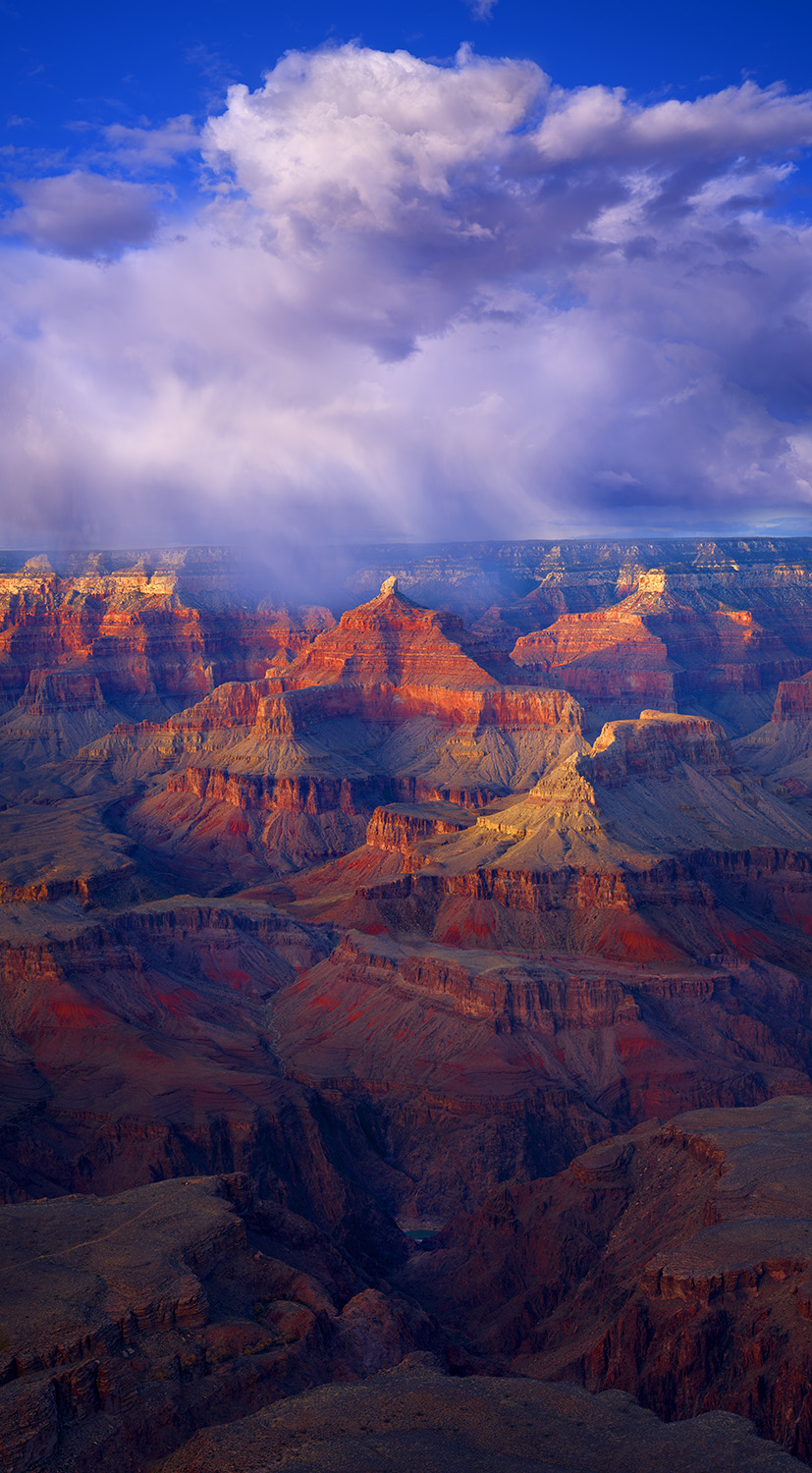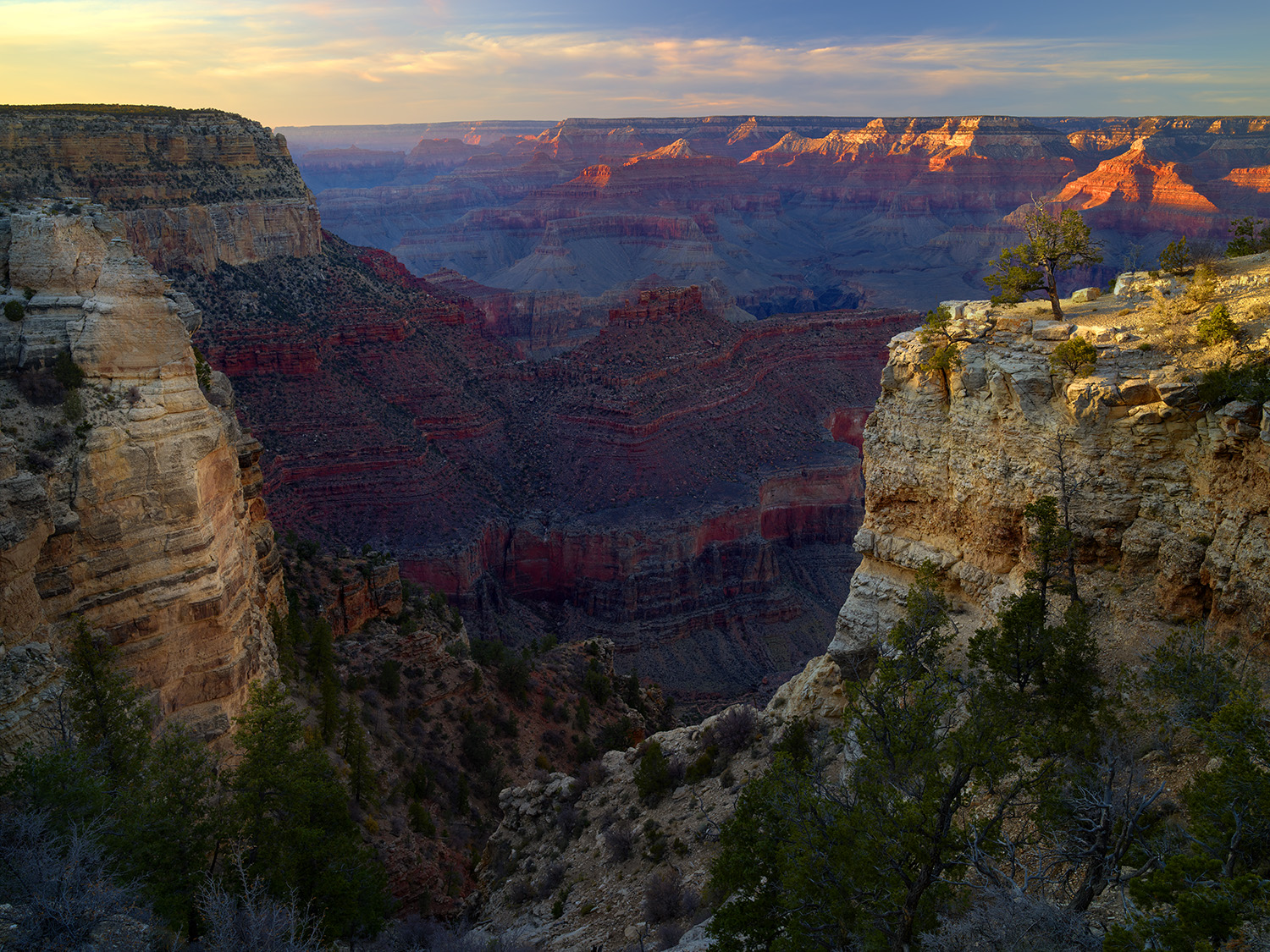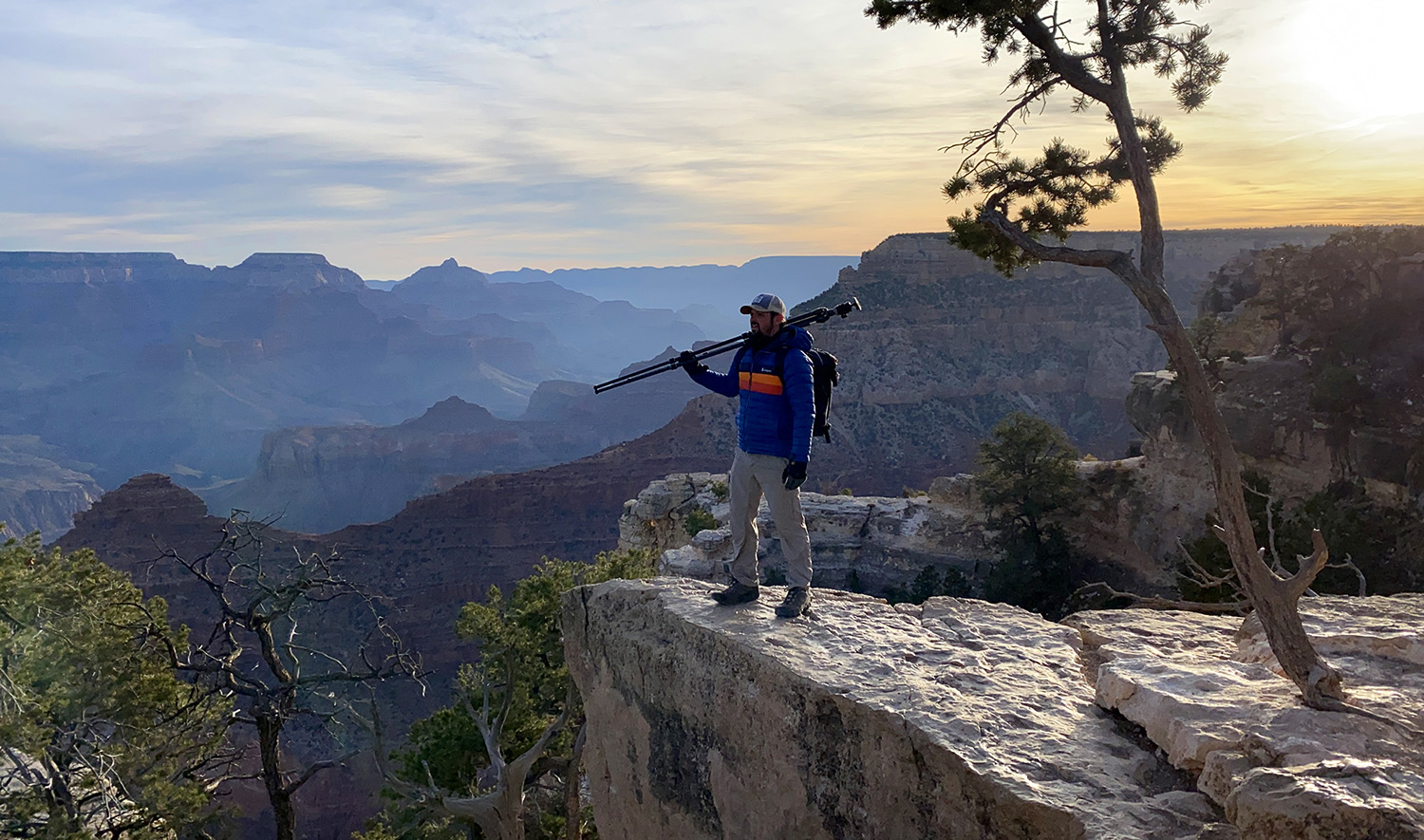There are landscapes that take your breath away, and then there’s the Grand Canyon—a place that doesn’t just take it, but keeps it, echoing it back in wind and silence and stone.
No matter how many times I visit the Grand Canyon—whether standing on the rim at sunrise or hiking into its depths with camera in hand—it never feels smaller, never loses its power to humble and elevate all at once. It’s not just a canyon. It’s a timeline written in rock, a painter’s palette of color and shadow, and for me, one of the most profound locations on Earth to photograph.
This post dives into what makes the Grand Canyon so staggering—not just in scale, but in soul.
A Brief History of the Grand Canyon
The story of the Grand Canyon begins over 1.8 billion years ago, with ancient Vishnu schist forming the foundation of what would become a mile-deep geological wonder. Over eons, sedimentary layers piled atop one another, oceans came and went, and the relentless force of the Colorado River carved the canyon we see today—exposing a vertical record of Earth’s history like no place else on the planet.
Long before it was a national park, this region was—and still is—sacred to Indigenous peoples. The Havasupai, Hopi, Navajo, Hualapai, and Zuni have long lived in and around the canyon, with deep cultural, spiritual, and practical ties to the land.
The canyon began attracting European-American explorers in the 1540s, but it wasn’t until the late 19th century that it became a destination for adventure, tourism, and ultimately preservation. In 1919, it was officially designated Grand Canyon National Park—now one of the Seven Natural Wonders of the World and a UNESCO World Heritage Site.
What Makes the Grand Canyon So Special?
We often talk about size when we talk about the Grand Canyon—277 miles long, up to 18 miles wide, and over a mile deep. But the true magic of this place is how it makes you feel.
1. Time in Layers
Nowhere else can you physically see nearly 2 billion years of Earth’s history in a single vista. The canyon walls are like pages in a book of time, each layer a different color, composition, and era. As a photographer, it’s a masterclass in natural texture, tone, and form.
2. Endless Perspectives
Whether you’re on the South Rim, North Rim, or deep in the Inner Canyon, every viewpoint reveals something new. The same scene looks radically different at sunrise, mid-day, and sunset. And with every shift in light, wind, or cloud, the canyon re-composes itself.
3. Light and Atmosphere
This is what keeps me coming back. The way the canyon plays with light is nothing short of magical. At dawn, the first light creeps across buttes and ridgelines like fingers of fire. At sunset, the walls catch flame, then slowly fade to violet and blue. After dark, the skies explode with stars.
4. Extreme Diversity in a Single Park
Most people know the iconic viewpoints, but few realize how varied the park really is. From high alpine forests on the North Rim to sun-scorched desert at the bottom, the Grand Canyon encompasses multiple ecosystems, each with unique photographic and emotional possibilities.
The Grand Canyon Through the Seasons
Each season reveals a different mood, and as a photographer, each trip offers a new challenge—and a new reward.
Spring (March–May)
Spring is when the canyon begins to reawaken. Wildflowers bloom on the rim, desert cactus blossoms open, and the snow on the North Rim begins to melt. The air is crisp, and crowds haven’t yet reached their peak.
Photographer’s Tip: Look for blooming yuccas and desert marigolds along the rim trails. Sunrise shots often benefit from lingering morning haze for added atmosphere.
Summer (June–August)
Summer is hot—especially below the rim—but it also brings dramatic monsoon storms that roll in during July and August. These create moody skies, shafts of light, and sometimes even rainbows and lightning over the canyon.
Photographer’s Tip: Embrace the storms. There’s nothing like a brewing thunderhead behind a sunlit mesa. Carry a rain cover for your gear, and watch the weather—conditions change fast.
Fall (September–November)
Fall is quieter, cooler, and clearer. The North Rim’s aspen trees turn gold, the air becomes dry and sharp, and the light becomes more angled and soft. It’s one of the best times to visit.
Photographer’s Tip: Catch sunrise from Lipan Point for layered silhouettes and long golden shadows. Fewer visitors mean more peaceful compositions.
Winter (December–February)
Winter is my favorite time to photograph the South Rim. Snow drapes the canyon edges, trees glisten with frost, and the sky is often an icy blue. The contrast between red rock and white snow is pure visual poetry.
Photographer’s Tip: After a snowfall, head to Yavapai Point or Hopi Point for breathtaking rim views. Bring traction for your boots and gloves thin enough to operate your camera.
Managing the Crowds
The Grand Canyon sees over 6 million visitors a year, mostly on the South Rim. But with its sheer size and the right timing, solitude is absolutely possible—even during high season.
-
Visit the North Rim: Open from mid-May to late October, the North Rim is cooler, quieter, and just as photogenic.
-
Go early and stay late: Sunrise and sunset are when the canyon comes alive—and the crowds thin.
-
Hike below the rim: Even a short descent on Bright Angel or South Kaibab trails will shake off 90% of visitors.
–
Why I Keep Coming Back
The Grand Canyon is a paradox: it is both timeless and ever-changing. Every time I visit, it surprises me—how the light behaves, how the weather moves, how the silence feels.
As a photographer, it challenges me in the best ways. It’s not easy to capture the scale. You can’t fake the depth. You have to work for your compositions, wait for the light, and be present. You learn patience here. And you learn perspective—not just in the artistic sense, but in the existential one.
I return a few times each year not just to shoot, but to reset. To stand on the edge of something so vast that everything else fades. To feel small, in the most empowering way. There are images I’ve chased here for years, and others that just happen, unplanned, when the light breaks just right.
And I know I’ll never be finished with this place.
–
Final Thoughts
The Grand Canyon defies summary. It is an icon, yes—but also an experience, a teacher, a mirror. It’s where stone and sky meet in a conversation that’s been going on longer than human memory. And it’s where we, momentarily, get to listen in.
If you’ve never been, go—slowly. If you’ve been, go again—with new eyes. Whether you’re there to hike, to wonder, or to photograph, the Grand Canyon will reward you in ways you didn’t expect.
I’ll be back soon, camera ready, waiting for that elusive mix of light and silence that turns a landscape into a revelation.



